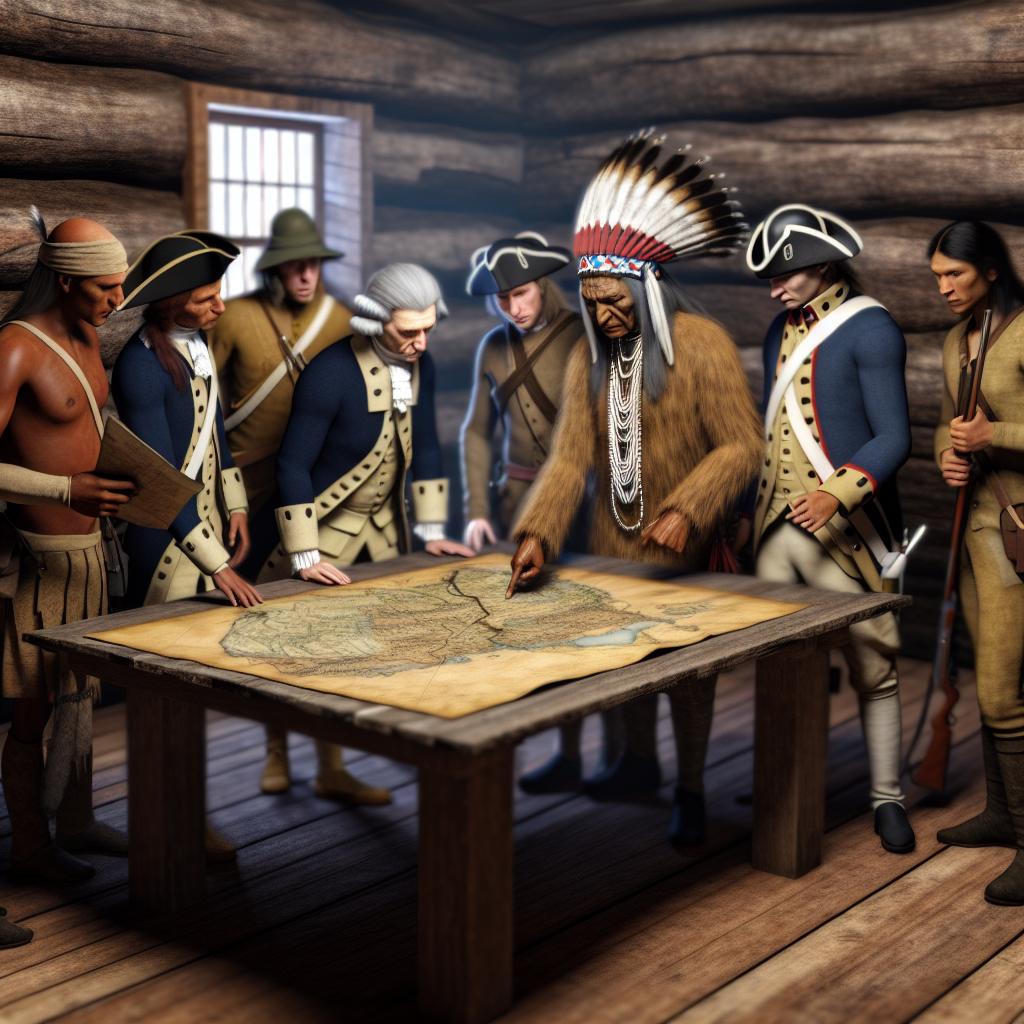The Complex Alliances of Native American Tribes
The American Revolution was a watershed moment, not only for the thirteen colonies seeking independence from British rule but also for the diverse Native American tribes that inhabited the vast swathes of North America. Their role in this conflict was complicated, influenced by strategic interests, historical relationships, and survival instincts.
Tribal Decisions and Diverging Alliances
During the American Revolution, Native American tribes found themselves at a crossroads, having to make challenging decisions about which side to support in the emerging conflict. Tribal choices were far from homogenous, with some tribes choosing to ally with the British, while others sided with the American colonists. These decisions were informed by various factors, including geographical considerations, historical ties with both sides, and perceptions of what alignment would best ensure their future security and survival.
The British Alliance
A number of Native American tribes, especially those residing near British-controlled territories and trading posts, chose to support the British during the American Revolution. These tribes were partly motivated by the long-standing trade relationships and partnerships they had established with British authorities. For example, the influential Iroquois Confederacy, a powerful alliance of six nations, had benefited from decades of trade and relatively stable relations with British settlers and officials. The Iroquois saw a British victory as a means to preserve these advantageous relationships and gain protection from the encroaching colonial expansionism of the American settlers.
The American Alliance
In contrast, some Native American tribes decided to cast their lot with the American colonists. The Oneida and Tuscarora tribes are notable examples of groups that supported the revolutionaries. Their choice was fueled by specific grievances against British policies, as well as long-standing animosities with rival tribes who had aligned themselves with the British. The Oneida, for instance, had their reasons rooted in experiences and strategic calculations that suggested an American victory might offer new opportunities or resolve certain local disputes in their favor.
Neutrality and Its Challenges
There were also tribes that sought to maintain neutrality, attempting to steer clear of the escalating conflict between the colonists and British forces. However, achieving neutrality was fraught with difficulties. As the war engulfed the continent, it became nearly impossible for tribes to remain untangled from the hostilities. The encroachment of war on tribal lands, combined with mounting pressures from both the British and American sides to declare a stance, rendered neutrality an increasingly untenable position. In many instances, tribes that initially attempted to stay out of the conflict were eventually compelled to choose sides, whether by force of circumstances or the demands of survival.
Consequences for Native American Tribes
The conclusion of the American Revolution ushered in significant and enduring consequences for Native American tribes. Although the American colonists emerged victorious, Native American interests were largely ignored in the treaties that formally ended the war. The Treaty of Paris in 1783, for example, which signaled the end of hostilities between Britain and the United States, failed to include representatives of the Native American tribes, fundamentally sidelining their stakes and interests.
Loss of Land and Autonomy
Post-war, many tribes faced the loss of substantial tracts of land through treaties that overwhelmingly favored American expansion and settlement. Tribes that had allied with the British, in particular, were subjected to punitive measures, as they were perceived by the victors as adversaries. The resultant loss of land had far-reaching implications, severely undermining their autonomy and sovereignty. This erosion of territorial control set in motion long-term detrimental impacts that would affect these communities for generations.
Cultural and Social Impacts
The fallout from the American Revolution extended beyond the material loss of land, influencing the cultural and social landscapes of Native American tribes. The war instigated disruptions to traditional ways of life, forcing tribes to adapt their social structures and cultural practices to the shifting political environment. Many communities were displaced, and the social dynamics within and between tribes were altered considerably, as new alliances were formed, and old rivalries were reignited under a different set of geopolitical circumstances.
Legacy and Historical Perspective
To appreciate the full scope of the American Revolution, it is essential to consider the integral role played by Native American tribes, which is often overlooked in traditional narratives. Their involvement in this historical conflict reflects a nuanced tapestry of strategic decisions rooted in survival, political calculation, and adaptation to unprecedented challenges. The inclusion of Native American perspectives in the larger narrative of the Revolution provides a richer and more comprehensive understanding of the period.
The history of Native Americans during the American Revolution underscores the necessity of inclusive historical storytelling. By delving into their experiences, we gain invaluable insights into the formative events that shaped the nascent United States. For those eager to explore this aspect of history further, numerous resources are available that delve deep into the complexities facing Native American tribes during this tumultuous period. Their stories are not just adjuncts in the grand narrative of the American Revolution; they are integral threads that offer critical lessons about resilience, adaptability, and the enduring struggle for autonomy and recognition.

